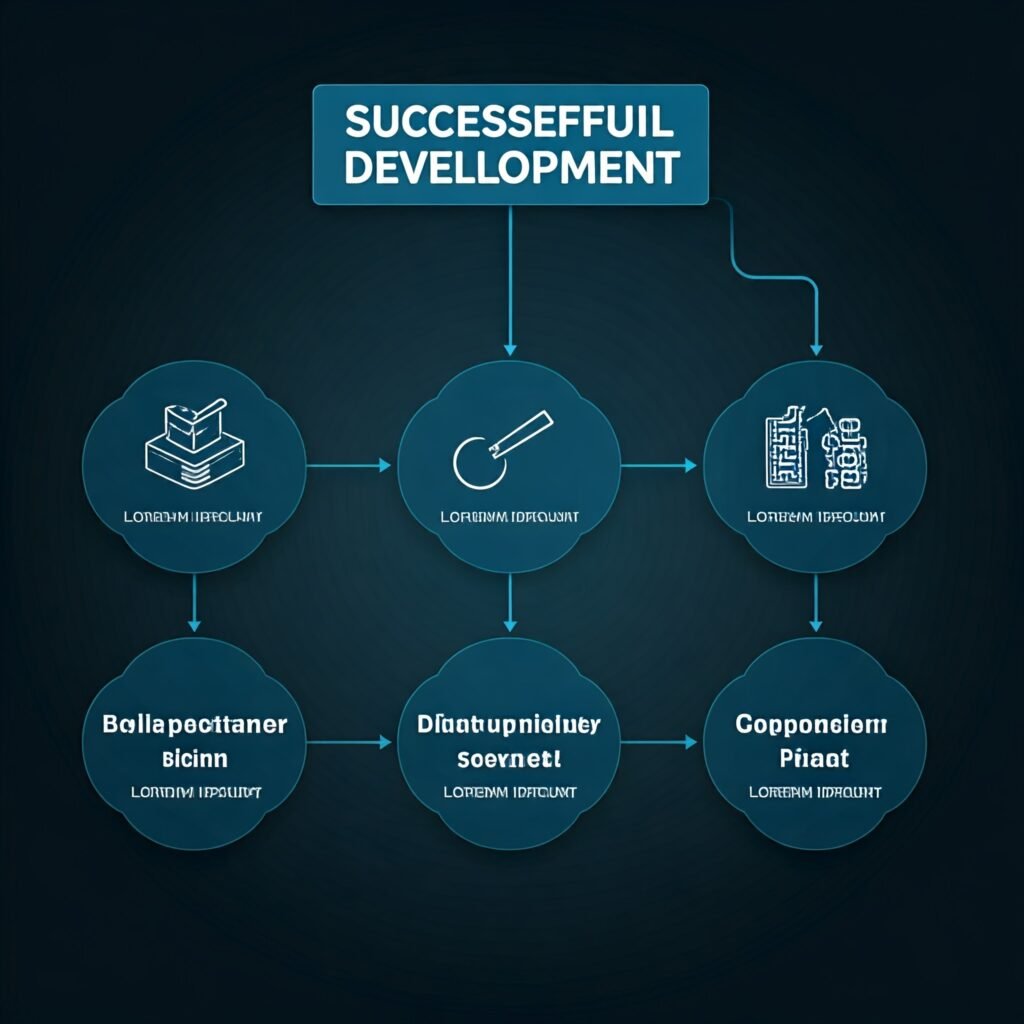Unlock the secrets of successful product development with our comprehensive guide to the 5 crucial stages. From ideation to launch, learn how to bring your innovative ideas to life and dominate the market.
https://www.youtube.com/@infinityskiescorp
In today’s fast-paced business world, bringing a successful product to market is more challenging than ever. Whether you’re a startup entrepreneur or part of an established company, understanding and mastering the product development process is crucial for success. This comprehensive guide will walk you through the five essential stages of successful product development, providing you with the knowledge and insights needed to turn your innovative ideas into market-ready products.
Stage 1: Ideation and Concept Development
The journey of product development begins with a spark of inspiration. This initial stage is all about generating and refining ideas that have the potential to solve real-world problems or fulfill unmet needs in the market.
Identifying Market Needs
Before diving into product creation, it’s essential to identify a genuine problem or need in the market. This involves:
- Conducting market research to understand consumer pain points
- Analyzing industry trends and emerging technologies
- Studying competitor offerings and identifying gaps in the market
Brainstorming Solutions
Once you’ve identified a market need, it’s time to generate potential solutions. Encourage creativity and out-of-the-box thinking by:
- Hosting brainstorming sessions with diverse team members
- Using techniques like mind mapping or SCAMPER (Substitute, Combine, Adapt, Modify, Put to another use, Eliminate, Reverse)
- Considering both incremental improvements and disruptive innovations
Concept Selection and Validation
After generating multiple ideas, it’s crucial to select the most promising concept and validate its potential. This involves:
- Evaluating each concept against predefined criteria (e.g., feasibility, market potential, alignment with company goals)
- Conducting initial market research to gauge consumer interest
- Creating rough prototypes or mockups to visualize the concept
Remember, the key to success in this stage is to validate your idea before investing significant time and resources. Don’t be afraid to pivot or abandon concepts that don’t show promise.
Stage 2: Research and Planning
With a validated concept in hand, it’s time to dive deeper into research and planning. This stage sets the foundation for the entire development process and can make or break your product’s success.
Comprehensive Market Analysis
Building on your initial research, conduct a thorough market analysis to:
- Define your target audience and create detailed buyer personas
- Analyze competitors’ strengths, weaknesses, and market positioning
- Identify potential barriers to entry and regulatory requirements
Product Roadmap Creation
Develop a detailed product roadmap that outlines:
- Key features and functionalities
- Development milestones and timelines
- Resource allocation (budget, personnel, technology)
Goal Setting and KPI Definition
Establish clear goals and key performance indicators (KPIs) for your product, such as:
- Target market share
- Revenue projections
- User acquisition and retention rates
By investing time in thorough research and planning, you’ll be better equipped to navigate challenges and make informed decisions throughout the development process.
Stage 3: Design and Prototyping
With a solid plan in place, it’s time to bring your product to life through design and prototyping. This stage is where your concept starts to take tangible form.
Detailed Product Specifications
Create comprehensive product specifications that outline:
- Technical requirements and constraints
- User interface and experience (UI/UX) guidelines
- Performance benchmarks and quality standards
Initial Design and 3D Modeling
Bring your product to life visually by:
- Creating detailed sketches and wireframes
- Developing 3D models using CAD software
- Exploring different design iterations to optimize form and function
Functional Prototype Development
Build a working prototype that demonstrates key functionalities:
- Use rapid prototyping techniques like 3D printing or CNC machining
- Develop software prototypes for digital products
- Create minimum viable products (MVPs) for early testing
Iterative Refinement
Remember that prototyping is an iterative process. Be prepared to:
- Test and gather feedback on each prototype iteration
- Make necessary adjustments and improvements
- Explore alternative materials or technologies if needed
By the end of this stage, you should have a functional prototype that closely resembles your final product and is ready for rigorous testing.
Stage 4: Testing and Validation
With a functional prototype in hand, it’s time to put your product through its paces. Thorough testing and validation are crucial to ensure your product meets user needs and quality standards.
User Testing
Conduct user testing to gather valuable feedback:
- Recruit participants from your target audience
- Observe users interacting with your product in real-world scenarios
- Collect qualitative and quantitative data on user experience
Quality Assurance Testing
Perform comprehensive quality assurance tests to identify and resolve issues:
- Functionality testing to ensure all features work as intended
- Compatibility testing across different devices or platforms
- Performance testing under various conditions (e.g., stress testing, load testing)
Regulatory Compliance
Ensure your product meets all relevant regulatory requirements:
- Conduct safety testing and certification processes
- Verify compliance with industry standards and regulations
- Obtain necessary approvals or certifications
Refinement and Optimization
Based on testing results, make necessary adjustments:
- Address user feedback and pain points
- Optimize performance and reliability
- Fine-tune the user interface and experience
Remember, thorough testing at this stage can save you from costly issues and reputation damage after launch.
Stage 5: Production and Launch
The final stage brings your product to market. This is where all your hard work comes to fruition, but it’s also a critical phase that requires careful planning and execution.
Manufacturing Process Setup
Prepare for production by:
- Finalizing your manufacturing process and supply chain
- Conducting pilot production runs to identify and resolve issues
- Implementing quality control measures throughout the production process
Marketing and Launch Strategy
Develop a comprehensive marketing and launch strategy:
- Create a compelling brand story and messaging
- Plan your product launch event or campaign
- Prepare marketing materials (e.g., website, social media content, press releases)
Sales and Distribution
Set up your sales and distribution channels:
- Establish relationships with retailers or distributors (if applicable)
- Set up e-commerce platforms for direct sales
- Train your sales team on product features and benefits
Post-Launch Monitoring and Support
After launch, closely monitor your product’s performance:
- Gather and analyze customer feedback
- Provide excellent customer support and address issues promptly
- Plan for future updates or improvements based on real-world usage data
Remember, a successful launch is just the beginning. Be prepared to support and improve your product continuously based on market feedback and changing customer needs.
Mastering the five stages of successful product development is crucial for bringing innovative ideas to life and creating products that resonate with your target market. By following this comprehensive guide, you’ll be well-equipped to navigate the challenges of product development and increase your chances of success.
Remember that product development is an iterative process, and flexibility is key. Don’t be afraid to revisit earlier stages if new information or challenges arise. With persistence, creativity, and a customer-centric approach, you can turn your product ideas into market-leading innovations.
Ready to take your product development skills to the next level? Subscribe to our newsletter for more in-depth guides, expert tips, and industry insights. And if you’re looking for personalized guidance on your product development journey, book a consultation with our team of experienced product development specialists today. Let’s bring your innovative ideas to life and create products that make a real impact in the market!
Check out more helpful tips on “The Weekly 5 Blog”.
OFFICIAL WEBSITE: https://InfinitySKS.com
CONTACT US: Sales@infinitysks.com
SOCIAL MEDIA:
- Facebook: https://facebook.com/infinitysks
- Instagram: https://instagram.com/infinitysks
- YouTube: https://www.youtube.com/@infinityskiescorp
- Twitter/X: https://twitter.com/infinitysks
- Pinterest: https://pinterest.com/InfinitySks
- Tumblr: https://tumblr.com/infinitysks

